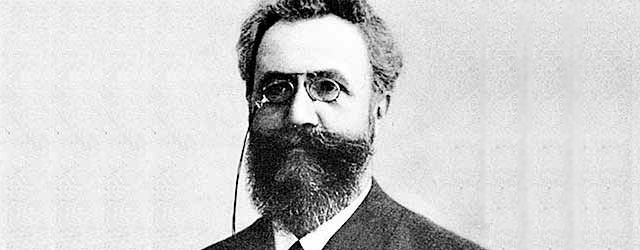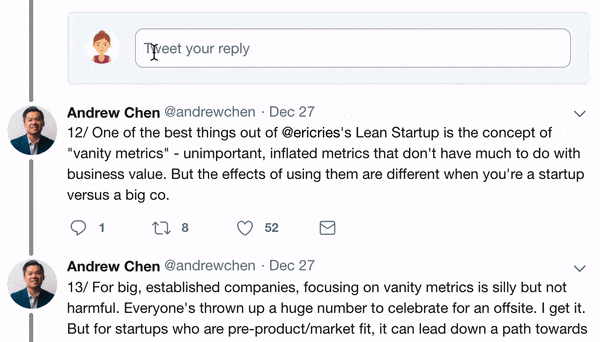
You must constantly learn new things to succeed.
But you forget 50% of what you learn within 1 hour.
A thread on how the science of forgetting works and how overcoming it can change your life... 🧠
But you forget 50% of what you learn within 1 hour.
A thread on how the science of forgetting works and how overcoming it can change your life... 🧠
Before we jump in, some background.
I’ve worked with 300+ top technology companies who have invested huge amounts of time and $ in training programs and learning software.
Most of it doesn't stick.
To show them why, I start with the basics of memory.
I’ve worked with 300+ top technology companies who have invested huge amounts of time and $ in training programs and learning software.
Most of it doesn't stick.
To show them why, I start with the basics of memory.
Let’s dive in.
The Forgetting Curve is an influential memory model that shows how what we learn slips out of our memories almost instantly.
It was derived in 1885 by psychologist Herman Ebbinghaus, who published landmark research in the field of retention and learning.
The Forgetting Curve is an influential memory model that shows how what we learn slips out of our memories almost instantly.
It was derived in 1885 by psychologist Herman Ebbinghaus, who published landmark research in the field of retention and learning.

In his work, he discovered that without any reinforcement or link to things we’ve learned before, information is instantly forgotten:
You forget over 50% of new information in 1 hour, 66% in 1 day, and 75% in 6 days.
You forget over 50% of new information in 1 hour, 66% in 1 day, and 75% in 6 days.

In fact, our brains are actively working to forget.
Neurobiologists Blake Richards and Paul Frankland demonstrated that the goal of memory is not to hold onto the most accurate info over time, but to help us make intelligent decisions by only holding onto valuable information.
Neurobiologists Blake Richards and Paul Frankland demonstrated that the goal of memory is not to hold onto the most accurate info over time, but to help us make intelligent decisions by only holding onto valuable information.
Unfortunately, evolution - which rids our memories of “excess” info - doesn’t neatly align with the knowledge we deem “valuable” to do our jobs.
So the key is to:
1) Understand how we’re wired to remember
2) Apply the same model to things we don’t want to forget.
So the key is to:
1) Understand how we’re wired to remember
2) Apply the same model to things we don’t want to forget.
How we’re wired to remember comes down to science.
In 2015, MIT neuroscientists led by Richard Cho demonstrated that memories can be enhanced by strengthening connections between neurons in our brain.
Like a spider web, these connections will collapse without reinforcement.
In 2015, MIT neuroscientists led by Richard Cho demonstrated that memories can be enhanced by strengthening connections between neurons in our brain.
Like a spider web, these connections will collapse without reinforcement.
There are two ways to strengthen memories newly encoded in our neural web.
- Access the memory repeatedly (strengthen each connection)
- Connect the memory to other bits of knowledge/feelings we have (new connections reinforce the web)
- Access the memory repeatedly (strengthen each connection)
- Connect the memory to other bits of knowledge/feelings we have (new connections reinforce the web)
Here’s an example of two sets of letters to remember:
EGNARO
ORANGE
The second is more memorable, with its existing, deeply encoded linguistic context, and associated memories of color, taste, smell, and place.
You remember by layering new memories on crumbling foundations.
EGNARO
ORANGE
The second is more memorable, with its existing, deeply encoded linguistic context, and associated memories of color, taste, smell, and place.
You remember by layering new memories on crumbling foundations.
This is why we’re good at remembering:
- things we need to know (ie: foods to avoid),
- experiences that trigger powerful emotions (surprise, success, sadness),
- material that has connections to other knowledge, feelings, places, etc. that are important to us.
- things we need to know (ie: foods to avoid),
- experiences that trigger powerful emotions (surprise, success, sadness),
- material that has connections to other knowledge, feelings, places, etc. that are important to us.
Clarity & formatting of material also helps us retain knowledge.
Different formats help us access the memory in new ways, and connect it more deeply to others.
Different formats help us access the memory in new ways, and connect it more deeply to others.
There are three steps to apply this mental model to learning new things:
1) Space Your Learning
2) Make Active Connections
3) Extend your Mind
1) Space Your Learning
2) Make Active Connections
3) Extend your Mind
1) Space Your Learning
Revisit key ideas regularly after you’re first exposed to “flatten” the Forgetting Curve.
This is why one-and-done employee trainings don’t lead to behavior change.
So once you learn something, come back to it in 1 day, 3 days, and 1 week.
Revisit key ideas regularly after you’re first exposed to “flatten” the Forgetting Curve.
This is why one-and-done employee trainings don’t lead to behavior change.
So once you learn something, come back to it in 1 day, 3 days, and 1 week.

Repetition alone isn’t everything.
The more ways you can revisit material, the stronger the encoding of the memory, as the “weave” in the web is reinforced.
If you read something you want to remember, look for a visual or podcast next.
Then, try to teach it to someone else.
The more ways you can revisit material, the stronger the encoding of the memory, as the “weave” in the web is reinforced.
If you read something you want to remember, look for a visual or podcast next.
Then, try to teach it to someone else.
Studies have shown when students explain what they’ve learned to peers, fading memories are reactivated, strengthened, and consolidated.
@SahilBloom has a good post about the Feynman technique explaining the science:
@SahilBloom has a good post about the Feynman technique explaining the science:
https://twitter.com/SahilBloom/status/1358108840198168576
2) Make Active Connections
The secret sauce to not forgetting new information is connecting it to other problems, experiences, memories, and feelings.
New connections reinforce the memory web.
The secret sauce to not forgetting new information is connecting it to other problems, experiences, memories, and feelings.
New connections reinforce the memory web.
Here’s an example.
You can try to remember how a highly technical feature works repeatedly.
OR
You can connect that feature to the problem your customer is trying to solve, and explain that solution.
Bringing together different concepts helps you place the memory in context.
You can try to remember how a highly technical feature works repeatedly.
OR
You can connect that feature to the problem your customer is trying to solve, and explain that solution.
Bringing together different concepts helps you place the memory in context.
3) Extend Your Mind
A growing body of research shows that the feelings and motions of our bodies, the physical spaces in which we learn and work, and the minds of those around us can affect what we remember.
You will forget less when you get more sleep and go for a walk.
A growing body of research shows that the feelings and motions of our bodies, the physical spaces in which we learn and work, and the minds of those around us can affect what we remember.
You will forget less when you get more sleep and go for a walk.
If you enjoyed this thread, give me a follow @shaanh - I share well-seasoned POVs on:
✅ The future of work
✅ Education and access
✅ Everything I learn building a startup
✅ The future of work
✅ Education and access
✅ Everything I learn building a startup
To bring it all together, you can forget less when you:
1) Space Your Learning
2) Make Active Connections
3) Extend Your Mind
Try it out by sharing this thread, and making a connection to something you’ve learned from it :)
1) Space Your Learning
2) Make Active Connections
3) Extend Your Mind
Try it out by sharing this thread, and making a connection to something you’ve learned from it :)
• • •
Missing some Tweet in this thread? You can try to
force a refresh



